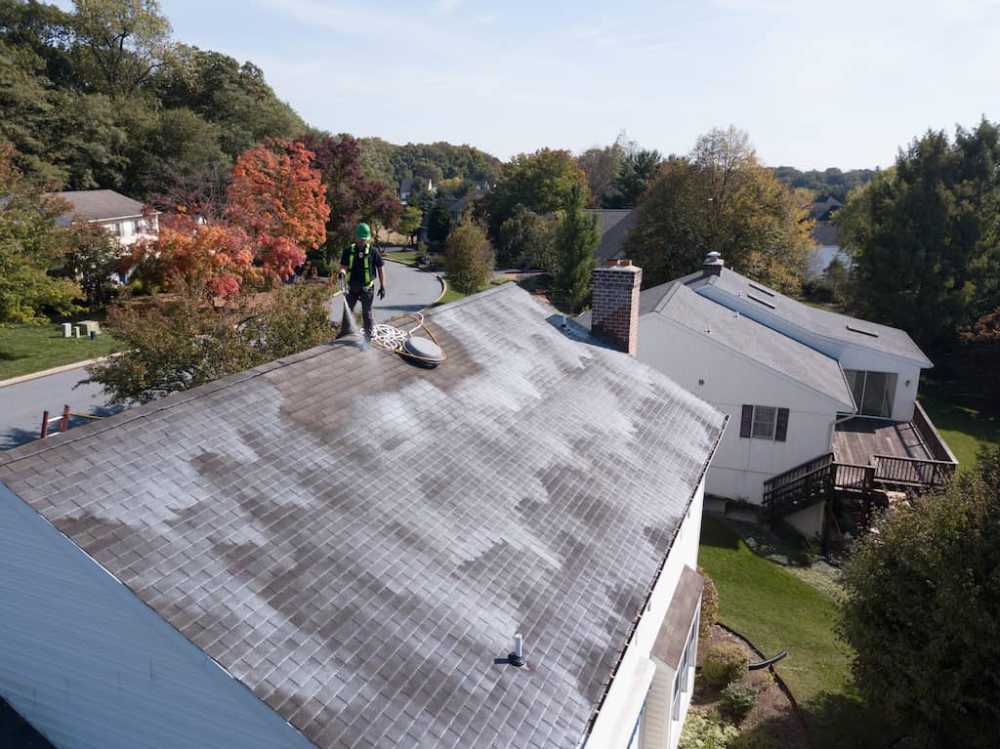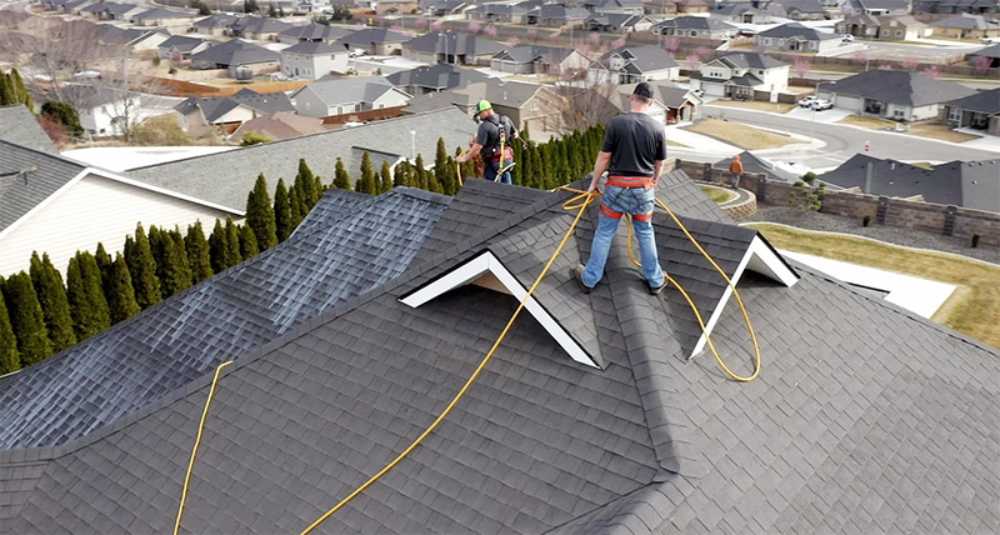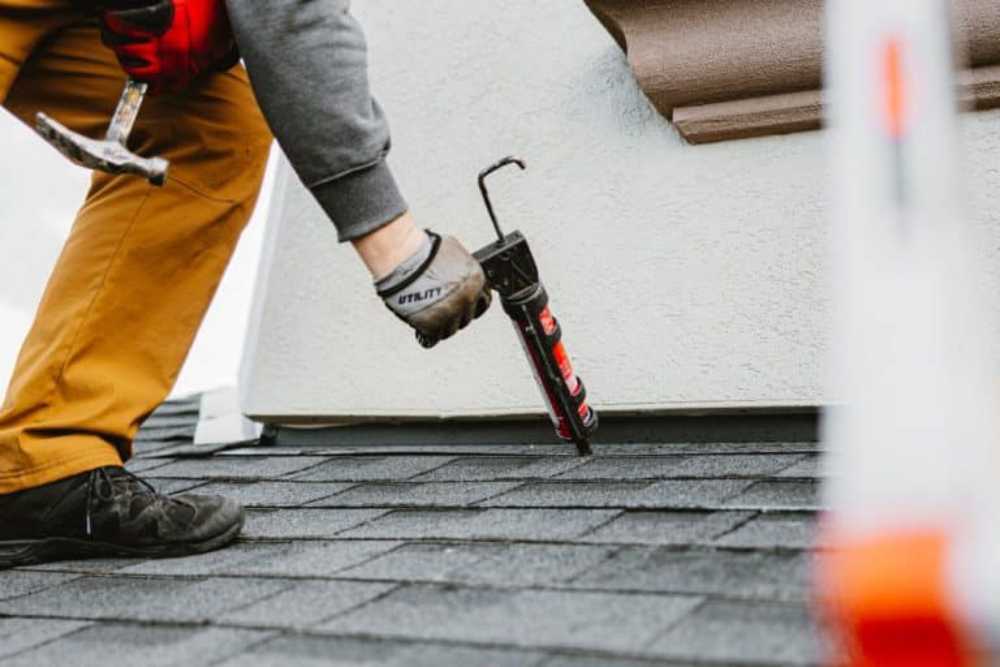Roof Maxx offers homeowners a revolutionary treatment that costs five times less than a complete roof replacement and adds up to 15 years to shingle life. This soybean-based solution gives property owners a viable alternative when their roofs start showing signs of age.
The treatment ranges from $1,500 to $2,400, making it an economical choice for homeowners watching their budget. Its EPA-listed formula brings back flexibility to dried-out asphalt shingles, though each property might see different results. Homeowners should know that while Roof Maxx breathes new life into shingles, it won’t fix existing leaks or structural issues.
This detailed review dives into Roof Maxx’s nature, effectiveness, and performance claims, backed by inspection data and analysis from the ground.
What is Roof Maxx and How Does it Work?
Research spanning five years led to the development of Roof Maxx, which showed a most important breakthrough in roof maintenance technology. This innovative treatment has a plant-based formula with 86% biobased content, setting it apart from traditional roof treatments.
Understanding the soybean-based formula
Soy methyl ester (SME) serves as the main component of Roof Maxx and has a similar chemical makeup to petrochemical oil. The formula earned recognition as a USDA Certified Biobased Product. The treatment’s safety stands out as it appears on the EPA’s Safer Chemicals Ingredient List with a full-green circle designation.

The science behind shingle rejuvenation
The technical process restores the original flexibility of asphalt shingles through penetration. Research at Ohio State University showed these improvements in treated shingles:
- 24% reduction in hail damage susceptibility
- Improved granule adhesion
- Better wind resistance
- No increase in flammability risk
Application process and coverage
Property owners can expect a quick and straightforward treatment that takes about 1.5 to 2 hours. The process involves:
- Original roof inspection and cleaning
- Minor repairs if needed (sealing pipe gaskets, securing loose flashings)
- Application of the soy-based formula
- 30-60 minute absorption period
The treatment needs temperatures above 36 degrees Fahrenheit and relatively dry weather to work best. The formula starts working right away, and full absorption happens within 30 minutes. It also has a natural fungicide that helps prevent moss and algae growth, though it won’t remove existing growth.
Each application adds five years to a roof’s life, and roofs can get up to three treatments for a total extension of 15 years. The treatment works best on roofs between 5-10 years old, though older roofs can benefit after needed repairs.
Professional Assessment of Claims
Lab testing has given us a clear picture of how well Roof Maxx works. The Ohio State University’s largest longitudinal study of a 17-year-old asphalt roof showed improvements in several performance areas.
Laboratory test results analysis
The scientific tests showed remarkable improvements in these key areas:
- 60% boost in shingle permeability
- 24% less susceptibility to hail impact
- Much better granule adhesion
Field performance observations
Roofing contractors have seen how Roof Maxx helps restore shingle flexibility. The treatment increases the oil base of shingles, which makes them repel water better. The product starts working just 30 minutes after application.
Limitations and restrictions
The product has some important limits to think about:
- The treatment helps with shingle flexibility but doesn’t fix structural problems
- Results vary depending on climate conditions
- You can’t apply it when temperatures drop below 36 degrees Fahrenheit
Professional roofers point out that while Roof Maxx extends shingle life, it can’t fix common roof problems like:
- Flashing failures
- Ventilation issues
- Storm damage
- Pre-existing leaks
The product’s success depends heavily on proper application. Independent contractors warn that wrong application methods could harm roof integrity. You’ll need to reapply the treatment every five years to maintain its effectiveness.
The warranty coverage is worth considering carefully. Each treatment comes with a 5-year warranty from the application date. Notwithstanding that, some roofing experts suggest that if your roof looks good enough to last another five years with Roof Maxx, it might last just as long without the treatment.
Cost Analysis and ROI
Homeowners who want to try Roof Maxx treatment should know about its most important cost advantages. The Roof Maxx treatment costs about 20% of a complete roof replacement.
Average treatment costs by region
A standard 2,500-square-foot home’s Roof Maxx treatment ranges between $3,000 and $6,000. The final price depends on:
- Local dealer pricing
- Required pre-treatment repairs
- Additional services (like gutter cleaning)
- Regional market conditions
Comparison with roof replacement
Roof Maxx offers huge savings compared to traditional roof replacement. Here’s what you’ll pay:
| Solution Type | Average Cost Range |
|---|---|
| Roof Replacement | $20,000 – $30,000 |
| Roof Maxx Treatment | $2,500 – $6,000 |
Homeowners can save up to 80% by choosing Roof Maxx instead of replacement. To name just one example, a roof with a $12,000 replacement cost might need only a $2,500 Roof Maxx treatment.
Long-term financial implications
The financial benefits go well beyond immediate savings. The treatment includes a 5-year flexibility warranty that stays valid even if the manufacturer’s warranty expires. This warranty protection gives you:
- Full transfer rights to new homeowners
- Prorated coverage for 60 months
- Potential insurance benefits
Regular Roof Maxx treatments can lead to better insurance rates because they show you maintain your property. Some homeowners have saved up to $10,000 yearly on insurance after treatment.
Roofs can receive up to three treatments, which makes this option even more economical. A single investment could add 15 years to your roof’s life, giving property owners excellent long-term value.
Inspection Criteria for Eligibility
Licensed Roof Maxx dealers need to evaluate if your roof qualifies for treatment. They follow a systematic approach to check roof conditions and treatment eligibility.
Pre-treatment roof evaluation methods
Certified Roof Maxx technicians perform detailed examinations. The evaluation has:
- Visual inspection of shingle condition
- Assessment of granule loss
- Examination of structural integrity
- Review of previous repairs
- Moisture level testing
Signs of suitable candidates
Roofs with specific aging signs make great candidates for treatment. The best time to treat is between 6-10 years of age, based on your local climate. Roofs over 20 years old have also shown successful treatment results.
Your roof qualifies for Roof Maxx treatment when it shows these signs:
- Loss of granule coating
- Reduced shingle flexibility
- Black stains or streaks
- Minor cracking or curling
- Visible granules in gutters
Red flags and disqualifying factors
Not all roofs can receive treatment. These conditions will disqualify a roof from Roof Maxx application:
- Compromised underlayment
- Active roof leaks
- Failed bond lines (typically after 15 years)
- Severe structural damage
- Extensive moss or algae growth
The treatment needs specific conditions to work well. The temperature must stay above 36 degrees Fahrenheit. The roof surface should be dry and clean before treatment.
Weather plays a vital role in successful application. There should be no rain forecast within an hour of treatment. The roof needs proper cleaning and drying time before application.
Minor repairs might be needed before treatment. These typically include:
- Sealing exposed nails
- Replacing missing shingles
- Repairing worn gaskets
- Addressing minor flashing issues
The inspection ends with a detailed report about your roof’s condition and recommendations. This full picture will give homeowners clear guidance about their roof’s suitability for Roof Maxx treatment.
Real-World Performance Data
Field data provides compelling evidence of Roof Maxx’s performance in a variety of settings. Large-scale commercial applications have showed soaring success rates in challenging environments.
Case studies and success rates
The Osthoff Resort project serves as proof of Roof Maxx’s effectiveness. The treatment covered nearly 40,000 square feet of roofing in 2022 and saved approximately $300,000 compared to replacement costs. The project worked so well that its scope doubled the following year.
Performance metrics from the field show:
- Visible color restoration
- Better shingle flexibility
- Improved weather resistance
- Extended roof longevity
Common issues and failures
Several limitations have emerged through field observations. The treatment’s effectiveness changes based on multiple factors:

| Factor | Impact on Performance |
|---|---|
| Shingle Age | Best results on 6-15 year old roofs |
| Application Method | Requires certified technicians |
| Maintenance | Annual inspections needed |
| Bond Lines | No improvement after 15-year mark |
Insurance considerations remain a major concern. Some carriers might still view treated roofs as aged, whatever the Roof Maxx application. This situation emphasizes the need to understand warranty coverage and insurance implications.
Weather impact on effectiveness
Weather conditions determine treatment outcomes significantly. Field data shows that Roof Maxx-treated sections perform better in harsh weather conditions. The treated portions of the Osthoff Resort roof withstood severe Wisconsin winters without damage, which proved its durability. Untreated sections needed costly repairs during the same period.
The treatment’s weather resistance capabilities include:
- Protection against UV damage
- Better flexibility in temperature extremes
- Improved moisture resistance
- Better granule retention in severe conditions
Field observations show that climate-specific factors affect performance duration. Some property owners get the full five-year extension, while others see shorter periods of effectiveness. Success rates strongly associate with:
- Pre-treatment roof condition
- Local weather patterns
- Application technique
- Maintenance practices
Independent studies at Ohio State University support these field observations. Treated shingles showed:
- 60% improvement in permeability
- 24% reduction in surface depression
- Major enhancement in granule adhesion
The treatment’s performance varies by region in extreme conditions. Properties in moderate climates often see optimal results, while those in severe weather zones might need more frequent maintenance. This regional variation shows why professional assessment and regular monitoring of treated roofs matter.
What Is Roof Maxx Frequently Asked Questions
What does Roof Maxx do for your roof?
Roof Maxx treatment is designed to rejuvenate aging asphalt shingles, extending the lifespan of your roof by restoring essential oils that keep shingles flexible. It helps reduce brittleness and prevents cracking, which can lead to Roof Maxx complaints about early roof failure. By using a soy-based bio-oil, Roof Maxx is an eco-friendly solution that protects your investment.
Will Roof Maxx stop leaks?
Roof Maxx does not directly fix leaks, but it can help prevent new ones by improving the condition of your shingles. If your roof already has leaks, they need to be repaired before applying the treatment. This preventative measure is most effective when your roof is in the early stages of wear.
How long does a Roof Maxx treatment last?
A single treatment lasts for approximately five years, offering a cost-effective solution compared to a full roof replacement. The company also provides a transferable five-year warranty, which is often mentioned in positive Roof Maxx reviews.
How much does a Roof Maxx treatment cost?
The cost varies based on the size and condition of your roof, but it generally ranges from $1,500 to $2,500. This is significantly less expensive than a full roof replacement, making it an attractive option for many homeowners.
What is the Roof Maxx vs Greener Shingles lawsuit?
The Roof Maxx lawsuit involves a dispute between Roof Maxx and Greener Shingles over alleged similarities in their products and business models. Both companies market treatments for aging roofs, but the lawsuit highlights the challenges in protecting proprietary methods in this niche industry.
Is Roof Maxx any good?
Based on Roof Maxx reviews, the product has proven effective for many homeowners seeking an affordable alternative to roof replacement. However, some complaints note that its effectiveness depends on the condition of the roof prior to application.
Was Roof Maxx on Shark Tank?
No, it was not featured on Shark Tank but Kevin Harrington did invest. The company gained its reputation through innovative marketing and satisfied customers rather than appearing on the popular TV show.
What is in Roof Maxx?
Treatment is made of a soy-based bio-oil designed to replenish the natural oils in asphalt shingles. This environmentally friendly solution helps shingles retain their flexibility and durability.
How long has Roof Maxx been in business?
Roof Maxx has been in business since 2017, quickly gaining recognition for its innovative and eco-friendly approach to roof maintenance. Over the years, it has garnered attention through positive customer experiences and industry accolades.
Does Roof Maxx work on old shingles?
Yes, it can work on old shingles, but the roof must still have some life left in it. Roofs in extremely poor condition may not benefit as much, leading to some complaints about limited results.
Does Roof Maxx get rid of black streaks?
No, it does not specifically remove black streaks caused by algae. However, it may improve the overall appearance of your roof by revitalizing the shingles and enhancing their color.
Is Roof Maxx safe?
Yes, it is safe for people, pets, and the environment. Its soy-based bio-oil formula is non-toxic and biodegradable, offering peace of mind to eco-conscious homeowners.
